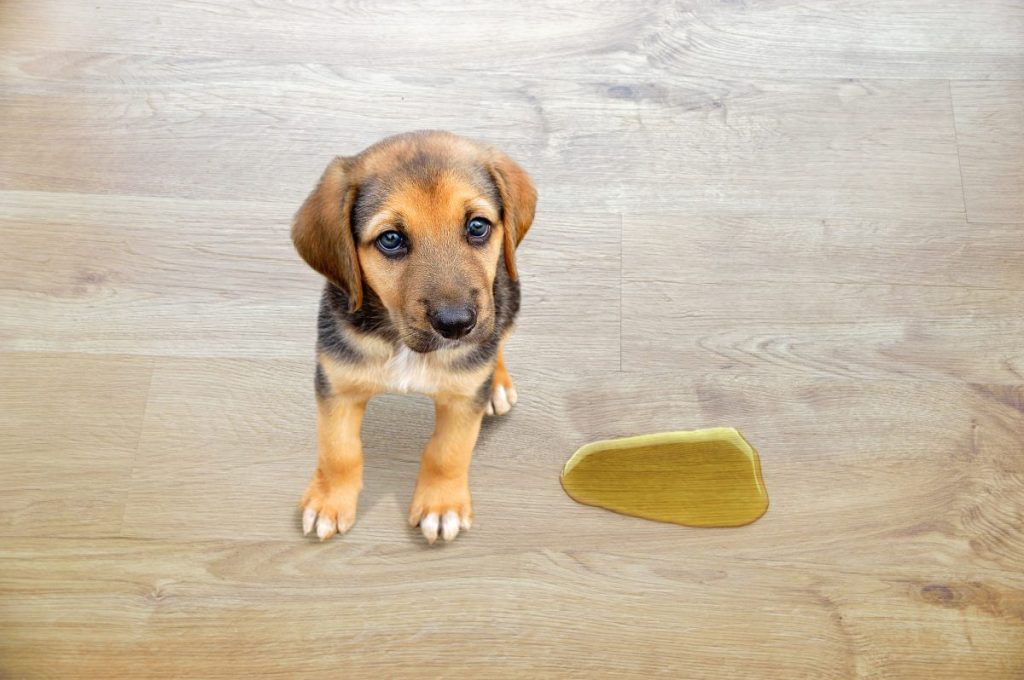As dog parents, we understand that accidents happen, especially when it comes to potty training. However, when your furry companion begins involuntarily urinating outside of regular potty breaks, it can be concerning and frustrating. Involuntary peeing in dogs can occur for various reasons, and it’s essential to address the underlying cause while implementing effective solutions to manage the issue. We’re going to explore the causes of involuntary peeing in dogs and provide practical solutions for handling this challenge.
Causes of involuntary peeing in dogs
Urinary Tract Infections (UTIs): One of the most common reasons for involuntary peeing in dogs is a urinary tract infection. UTIs can cause discomfort while urging your dog to urinate frequently and involuntarily. Look out for signs such as frequent urination, blood in urine, and excessive licking of the genital area.
Hormonal Imbalances: Hormonal imbalances, such as those seen in spayed or neutered dogs, can lead to involuntary peeing. The lack of estrogen or testosterone can weaken the muscles responsible for bladder control, resulting in accidents.
Aging and Weak Bladder Muscles: Just like humans, dogs can experience a weakening of bladder muscles as they age. This can cause leakage or involuntary urination. Senior dogs may also develop cognitive issues, such as dementia, which can contribute to potty accidents.
Excitement or Anxiety: Some dogs may involuntarily urinate when they become overly excited or anxious. This is commonly seen in puppies or dogs who haven’t fully gained control over their bladder. It’s important to approach this issue with patience and positive reinforcement.
Solutions for dealing with involuntary peeing
Consult a Veterinarian: If you notice your dog experiencing involuntary peeing, the first step is to schedule a visit with your veterinarian. They can perform a thorough examination and conduct diagnostic tests to identify any underlying medical conditions, such as urinary tract infections or hormonal imbalances.
Potty Training and Scheduled Walks: Reinforce potty training techniques with your dog, even if they were previously well-trained. Maintain a consistent schedule for walks and bathroom breaks to provide your pup with regular opportunities to relieve themselves.
Manage Excitement and Anxiety: For dogs that involuntarily urinate due to excitement or anxiety, it’s crucial to manage their emotions. Gradually expose your dog to the triggers that cause excitement or anxiety, using positive reinforcement and reward-based training methods. This can help them gain better control over their bladder.
Medication and Supplements: In certain cases, your veterinarian may prescribe medication or recommend supplements to address underlying medical issues contributing to involuntary peeing. These can help manage UTIs, strengthen bladder muscles, or regulate hormonal imbalances.
Belly Bands and Diapers: For dogs experiencing consistent involuntary urination, belly bands or diapers can provide temporary solutions. These absorbent garments can help contain urine and prevent messes in your home. However, they should be used as a short-term measure while working on resolving the underlying issue.
Environmental Management: Take steps to protect your home from accidents by using puppy pads, waterproof covers for furniture, and regular cleaning with pet-friendly urine odor eliminators. This will help maintain a clean and hygienic living environment.
Moving beyond the problem
Patience, consistency, and positive reinforcement are key when addressing involuntary peeing in dogs. With proper veterinary care, training techniques, and understanding, you can help your furry friend regain control. Then, you both can enjoy a happy, accident-free life.
Involuntary peeing in dogs can be a distressing issue for both you and your dog. By identifying the underlying causes and implementing appropriate solutions, you can effectively manage the problem. Don’t hesitate to seek guidance from your veterinarian, as they can provide invaluable advice and support throughout the process. With time and effort, you can help your dog overcome involuntary peeing and take their business outside!




